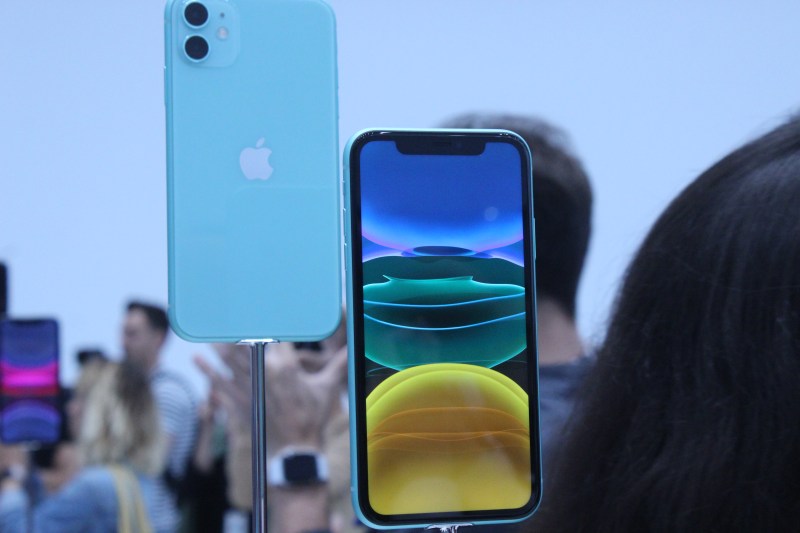Apple unveiled its iPhone 11 smartphone at its By Innovation Only event in Cupertino today, and we got a look at it.
This phone is a successor to the iPhone XR and has a cheaper liquid crystal display (LCD) and a 6.1-inch display — pretty much the same as last year’s model.
The iPhone 11 features an Apple-designed A13 Bionic processor, which has a better central processing unit (CPU) and graphics processing unit (GPU), as well as upgraded machine learning acceleration and a new Neural Engine. This chip has 8.5 billion transistors, compared to 6.9 billion for the A12 processor. The CPU’s dual performance cores are 20% faster than the previous generation and use 30% less power.
Apple showed off the processing power with a game dubbed Pascal’s Wager from Giant Interactive. It boasts improved face recognition with “enhanced Face ID” and can now recognize your face even if the camera angle is a bit off.
June 5th: The AI Audit in NYC
Join us next week in NYC to engage with top executive leaders, delving into strategies for auditing AI models to ensure fairness, optimal performance, and ethical compliance across diverse organizations. Secure your attendance for this exclusive invite-only event.
Better cameras

Above: iPhone 11
Probably the biggest improvement you’ll notice is in the two 12-megapixel ultra-wide cameras with 2x optical zoom. The iPhone 11 has two cameras, compared with three in the iPhone 11 Pro and the iPhone 11 Pro Max. The iPhone 11 costs $699, compared with $999 for the iPhone 11 Pro and $1,099 for the iPhone 11 Pro Max.
Like the Pro models, this phone doesn’t have 5G connectivity, which could be a problem as 5G takes off throughout the world with other phone makers.
Color options are purple, white, green, yellow, black, and red.
When you look at the screen while taking an image, the immersive camera interface lets you view outside the frame, so you can see the outline of what will be in the image with the ultra-wide camera. Just tap the screen to switch from ultra-wide to regular modes.
One of the most useful new additions is Night Mode. (The device can now compete with Google Pixel and Samsung Note phones.) With Night Mode, the camera automatically brightens parts of a picture that are washed out, particularly when a subject is backlit or an image has many different shades of lighting. For me, this is the most impressive improvement.
The camera can shoot video at 4K resolution up to 60 frames per second and capture slow-motion and time-lapse shots.
The iPhone 11 can also handle selfie videos or “slofies,” as Apple calls them. It offers 17 hours of video playback time and 65 hours of audio playback time.
You can now order the iPhone 11, which ships on September 20.

